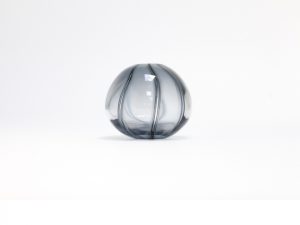
A tension rankles between the traditional vanguard and today’s ‘new wave’. Reflected in culture, multiple understandings of history and our communication choices, the struggle to understand generations before and after our own is often at the root of why we create: to tell our story. In the centenary year of the Easter Rising and the year of Brexit – two defining and connected moments shaping Ireland, Britain and Europe – the tension between new and old is of the zeitgeist.
Tension isn’t necessarily negative. It can be the propellant needed to push beliefs and society forward making new ground and putting pay to outdated thought. Consider last year’s majority vote supporting gay marriage in the Republic of Ireland, a powerfully progressive statement wholly unimaginable at the time of the Eater Rising. It demonstrates we can take something traditional – marriage – and inject it with a contemporary spark – equality! – to create something new, showing tension can create something warm, friendly and downright convivial. We need to celebrate these stories to keep moving forward.
So, what is ‘a story’? Literally, a story is “a narrative designed to interest, amuse, or instruct the receiver”. Stories allow us to understand personal positions; picture individual environments and reflect and share our histories, differences and similarities. They state our identities. Post-Brexit our stories could be more important than ever, which informs what 2016’s Liverpool Irish Festival is about: bringing Liverpool and Ireland closer together. What could be more convivial than that?
Everyman Street Café will provide (Mon-Sat) the social hub for the festival, with a small library of Irish materials, providing space for people to meet, talk about festival events and make friends. The event holds multiple stories ripe for sharing, discussing and reconsidering. A 100 years since James Joyce’s Portrait of the Artist as a Young Man HE Ambassador to Ireland Dan Mulhall, Professor Frank Shovlin of the University of Liverpool’s Institute of Irish Studies and other academics will discuss its significance and legacy. Scadán (a new Irish story and production) from Liverpool and Irish writers, actors and producers, explores five female stories on an Irish island, 100 years ago.
Commemorative responses differ across the generations, offering moments of reflection and chances to explore a central moment in the foundation of the Irish Republic. 1916’s Easter Rising saw six days of fighting in Dublin, with nearly 100 men and women risking everything to travel from Liverpool to take part, stating a claim for their Irish-ness. Today 6 million ‘English people’ await Irish passport decisions, showing ‘Irish-ness’ is just as important today. Accordingly, this year, we are showing contemporary works exploring what the Easter Rising means – historically and today – in artefact form (Central Library) and in print (the Bagelry), with additional talks on the subject. Singer songwriter – Damien Dempsey – performs his unique album No Force on Earth commemorating the Rising (Music Room, Liverpool Philharmonic). We also have Peter King’s (descendent of the King Brothers, famous Liverpudlian Easter Uprising volunteers) Liverpool Lambs among many more.
The Liverpool Irish Festival does not pitch new against old. It explores what can be learned from both and enjoys what can happen in between. Without taking sides, it considers how and why we arrive where we are and how we may use it to shape what follows. It provides convivial environments to provoke discussion, encourage sharing and explore difference, whilst building friendships, progressing views and creating positive experiences. Sound interesting? Get along to the Liverpool Irish Festival, 13-23 October 2016.
Written for Bido Lito by Laura Brown and Emma Smith
